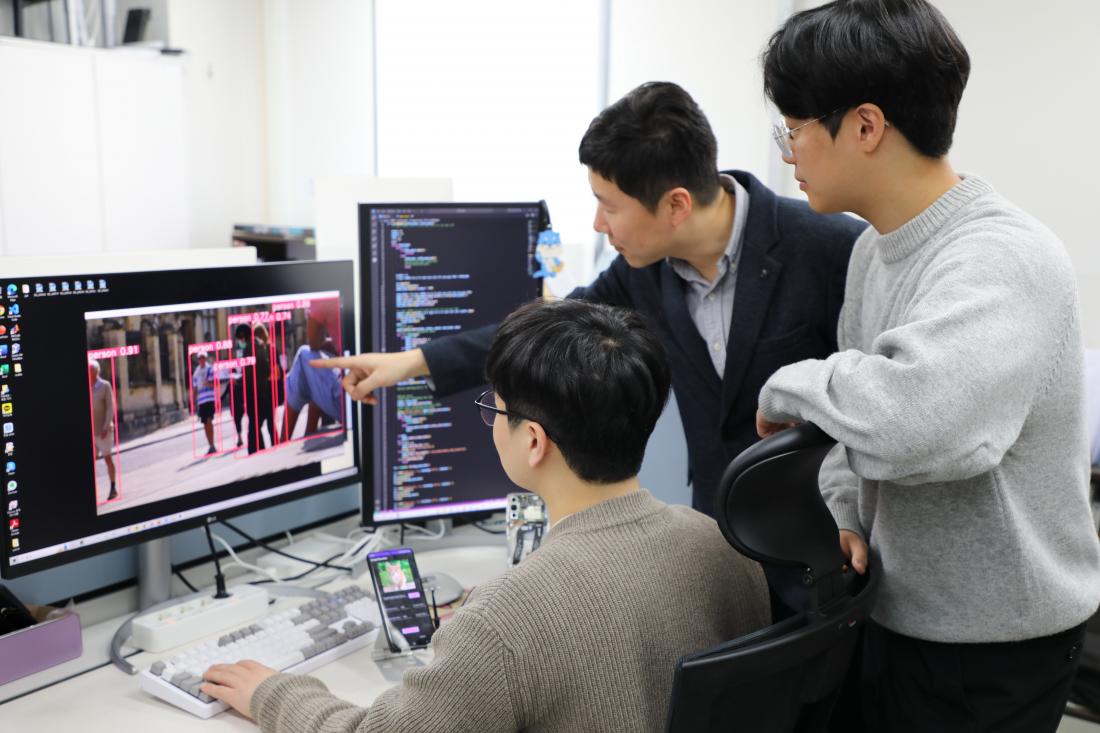□ The team of Professor Jeongho Kwak from the Department of Electrical Engineering and Computer Science at DGIST (President Kunwoo Lee) has developed a 'learning model and resource optimization technology' that combines accuracy and efficiency for 6G vision services. This technology is expected to be utilized to address the high levels of computing power and complex learning models required by 6G vision services.
□ 6G mobile vision services are associated with innovative technologies such as augmented reality (AR) and autonomous driving, which are receiving significant attention in modern society. These services enable quick capturing of videos and images, and efficient understanding of their content through deep learning-based models. However, this requires high-performance processors (GPUs) and accurate learning models. Previous technologies treated learning models and computing/networking resources as separate entities, failing to optimize performance and mobile device resource utilization.
□ To address this issue, Professor Jeongho Kwak's team focused on simultaneously optimizing learning models and computing/networking resources in real-time. As a result, they proposed a new integrated learning model and computing/networking optimization algorithm, 'VisionScaling,' which is capable of reducing energy consumption by at least 30% while maintaining average accuracy compared to current technologies, without compromising on average target accuracy or time delay.
□ The 'VisionScaling' algorithm developed by Professor Kwak's team adapts to constantly changing mobile environments to maintain optimal performance, even without prior knowledge of future conditions, through the use of 'Online Convex Optimization (OCO),' one of the latest learning techniques.
□ Furthermore, Professor Kwak's team implemented and tested the real-world mobile vision service environment using embedded AI devices and connected edge computing platforms[1]. They confirmed that the developed VisionScaling algorithm saves 30% more energy in mobile devices and improves end-to-end latency by 39% compared to previously used algorithms.
□ Professor Jeongho Kwak from the Department of Electrical Engineering and Computer Science at DGIST stated, "This research satisfies both the practical contribution of implementing and verifying performance in irregularly changing mobile environments and the mathematical contribution of utilizing dynamic optimization and learning techniques to prove optimal performance. It is significant as it provides a technical foundation for deep learning-based mobile services requiring higher memory/computing resources in the future."
□ This research involved contributions from Pyeongjun Choi and Dongho Ham, integrated master's and doctoral students from the Department of Electrical Engineering and Computer Science at DGIST, and Professor Yeongjin Kim's team from Inha University. The results were published online on January 3 in the 'IEEE Internet of Things Journal,' a top 3% international academic journal in the related field.
- Ccorresponding Author E-mail Address : [email protected]
[1] Edge Computing Platforms: This term signifies a computing infrastructure that is opposite to the concept of centralized cloud computing. It refers to processing and analyzing data close to where it is generated, namely near devices or sensors.



